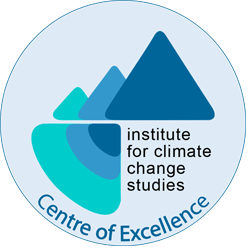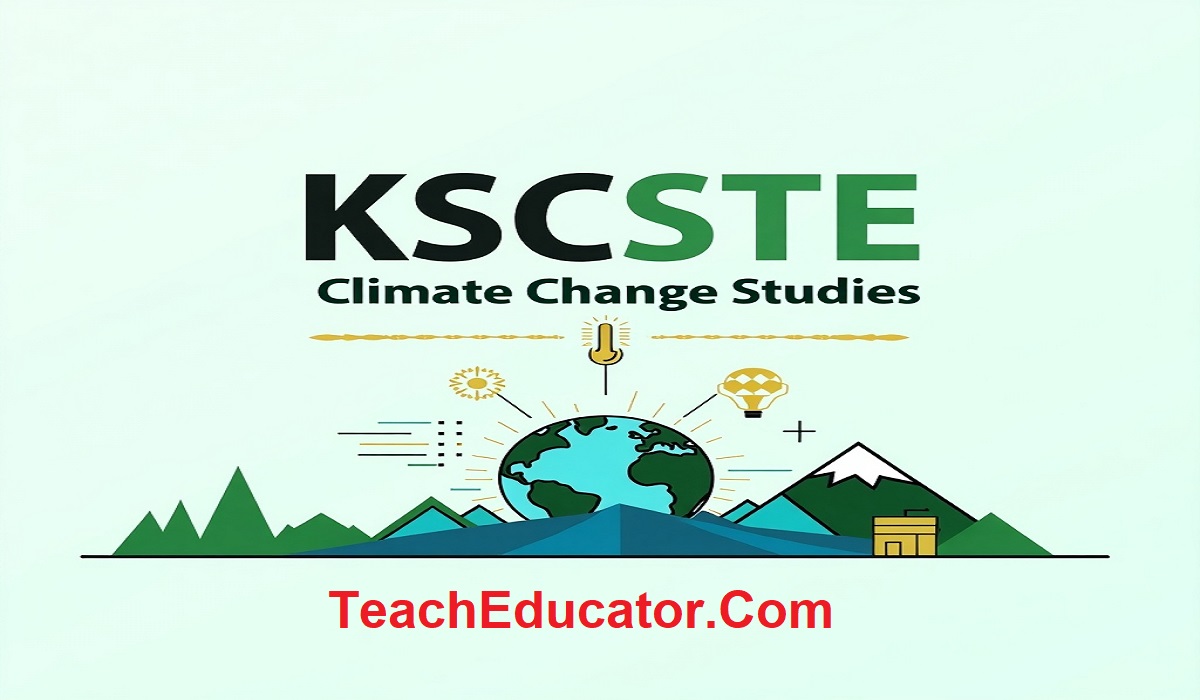KSCSTE Climate Change Studies
KSCSTE Climate Change Studies: Climate change is one of the greatest challenges facing our planet, and research institutions around the world are stepping up. Among them, the Kerala State Council for Science, Technology & Environment (KSCSTE) plays a key role in regional climate research.
In this article, we’ll explore KSCSTE Climate Change Studies, looking at how the institute is contributing to understanding climate change, the highlights of its work, and why its studies matter. We’ll keep the language clear and simple so anyone can follow along.
What is KSCSTE and the Institute for Climate Change Studies
The institute at the heart of these efforts is the Institute for Climate Change Studies (ICCS), which operates under KSCSTE. ICCS is an autonomous research body registered in 2014.
Its mission is to perform state-specific climate change research, support adaptation strategies, and integrate climate science into policy and planning.
Here are more details:
- Vision: To empower the state of Kerala against inevitable climate change consequences through science, technology, innovation, and awareness.
- Objectives: To focus on the impacts of climate on various sectors (e.g., water, agriculture, coastal zones) and propose adaptation and mitigation.
- Institutional role: It is part of KSCSTE’s network of R&D centres, which supports scientific research in Kerala.
Thus when we refer to KSCSTE Climate Change Studies – Latest, we are mainly referencing the recent research, reports, and activities undertaken by ICCS under KSCSTE’s guidance.



Key Recent Findings in KSCSTE Climate Change Studies
The latest output from ICCS offers important insights. Some highlights of KSCSTE Climate Change Studies – Latest include:
Rise in temperature in Kerala
One of the major findings is that the annual mean land surface air temperature in Kerala for 2024 was +0.99 °C above the long-period average (1991–2020), making 2024 the warmest year on record for the state since 1901.
This shows that the region is experiencing measurable warming and that the trends are not just global but local.
Sector-specific climate impacts
ICCS research focuses on how climate change affects various sectors:
- Hydrology and water resources (how changes in rainfall and temperature affect rivers, floods, droughts)
- Coastal areas and marine systems (given Kerala’s long coastline)
- Agriculture and land use (impacts on crop yields, soil moisture)
- Health and societal impacts (for example, how extreme weather affects public health)
These are all part of the KSCSTE Climate Change Studies – Latest work to make research actionable for the local context in Kerala.
Climate information systems and real-time monitoring
Another important component of the studies is the development of climate-information systems. ICCS provides real-time rainfall, temperature data and seasonal outlooks specific to Kerala.
Having such data helps decision-makers plan for floods, droughts, monsoon variability.
Workshops, capacity building and policy linkage
Beyond pure research, the Highlights KSCSTE Climate Change Studies include workshops such as a five-day national workshop on hydrological modelling (Jan 2025) organised by ICCS.
There are also Memorandums of Understanding (MoUs) between ICCS and other institutions for climate data dissemination.
Why These Studies Matter – Best KSCSTE Contributions?
Understanding the significance of Best KSCSTE Climate Change Studies means looking at how they matter in real life:
Local relevance
While much climate research is global, the ICCS work is local to Kerala (and similar regions). That means the findings are more relevant to the people, land, and environment in that state. Localised insights matter for adaptation.
Practical application
By focusing on rainfall, temperature, monsoon dynamics, and readiness of sectors like water and health, the studies support practical decision-making. For instance, having a climate information system helps the state government plan for monsoon floods or drought protection.
Building capacity and awareness
Training workshops, collaboration with universities, use of technology (e.g., high performance computing) all reflect how KSCSTE is building institutional capacity. This ensures the studies aren’t just academic—they feed into policy and planning.
Trust and scientific rigour
The fact that ICCS is an autonomous research institution under KSCSTE, with defined mission and objectives, helps build trust. The KSCSTE Climate Change Studies – Latest are anchored in established scientific methods and institutional mandate.
How to Read the Latest KSCSTE Climate Change Studies?
For a reader or practitioner wanting to use the work of KSCSTE/ICCS, here are tips:
1. Look for the key data
When reviewing a study, check for metrics like temperature anomaly, rainfall deviations, seasonal outlooks. For example, the +0.99 °C anomaly for 2024 is a big number.
2. Examine sector-wise impacts
See how the findings translate into water resources, agriculture, coastal zones. That helps you apply the research to your domain (e.g., if you work in agriculture, focus on how rainfall variability is shifting).
3. Check for adaptation recommendations
Best-practice studies provide suggestions: for instance, when they mention capacity building, emergency preparedness, or technological innovation. For KSCSTE Climate Change Studies – Latest, workshops and MoUs show that adaptation is part of the agenda.
4. Use the data for local planning
Because the research is state-specific (Kerala), users in similar tropical coastal regions may find the findings relevant. For those outside Kerala (such as Pakistan or other places), the methods and framework (e.g., climate monitoring systems) may provide useful lessons.
5. Watch for updates
Climate research is evolving. The works under KSCSTE highlight changing seasonal behaviour and require ongoing monitoring. For example, ICCS publishes “The Kerala Climate Statement” annually.
Challenges and Frontiers in KSCSTE Climate Change Studies
No research is without its challenges. Here are some of the areas where KSCSTE Climate Change Studies – Latest must tackle next:
- Downscaling global models to local scale: While global climate models give broad projections, applying them to a state-level context (like Kerala) requires high resolution modelling and translation to actionable insights.
- Data gaps and long-term monitoring: For meaningful trend analysis, decades of data are needed. The institution must ensure continuous, reliable climate information systems.
- Integrating human and social dimensions: Climate change affects people. Including health, migration, livelihoods and social vulnerability is key.
- Dissemination and community engagement: Studies must reach decision-makers and communities. The translation of science into policy and local action remains a frontier.
- Resource constraints: Building computational infrastructure (e.g., high performance computing system) and maintaining research funding are practical challenges. ICCS has recently issued bids for such systems.
The Path Ahead: What to Expect from KSCSTE Climate Change Studies
Looking forward, the KSCSTE Climate Change Studies are likely to emphasise:
- Improved forecasting of monsoon behaviour and extreme events (floods, droughts) tailored to Kerala and similar regions.
- More integrated modelling: water-agriculture-coastal-health systems together rather than in silos.
- Use of machine learning, remote sensing and big data to make the climate information system more robust.
- Stronger linkages with policy: the output of ICCS influencing state disaster management, infrastructure planning, agriculture resilience.
- Expansion of capacity building: training young researchers, collaborations with other institutions inside and outside India.
Frequently Asked Questions (FAQs)
Q1. What exactly does “KSCSTE Climate Change Studies – Latest” refer to?
It refers to the most recent research, reports, data, workshops and monitoring activities by ICCS under KSCSTE focused on climate change—particularly how climate is changing in Kerala, its impacts, and adaptation strategies.
Q2. Why are the studies by KSCSTE / ICCS important?
Because they are locally relevant (Kerala, India), focus on actionable sectors (water, agriculture, health), and link science with policy and planning—thus bridging knowledge to practice.
Q3. Can the findings of KSCSTE Climate Change Studies apply outside Kerala?
Yes and no. The specific data is local, but the methodologies, frameworks, and lessons (e.g., building a climate-information system, linking climate research to adaptation) can be applied elsewhere—with adaptation to local conditions.
Q4. Where can one access the reports or data from ICCS / KSCSTE?
The ICCS website lists publications, climate statements, workshops and announcements. For example, “STATEMENT ON CLIMATE FOR THE STATE OF KERALA: 2024” is available.
Q5. What are the next steps for someone looking to engage with or use KSCSTE climate change studies?
You could:
- Follow ICCS announcements and publications.
- Use their data to inform local planning (if working in relevant sectors).
- Collaborate or attend workshops if you are a researcher.
- Consider how the adaptation recommendations might be relevant for your region.
Conclusion
In studying KSCSTE Climate Change Studies, we have seen how one institution-under-government is stepping up to meet climate change head-on with locally relevant science, robust monitoring, and actionable recommendations. The work of ICCS under KSCSTE offers clear examples of how research can move beyond theory and into practice for the benefit of communities.
As climate change accelerates globally, such studies gain even more importance. They remind us that understanding, adaptation and resilience start close to home. By paying attention to institutions like KSCSTE and leveraging their findings, we gain better tools to plan, respond and thrive in a changing climate.
